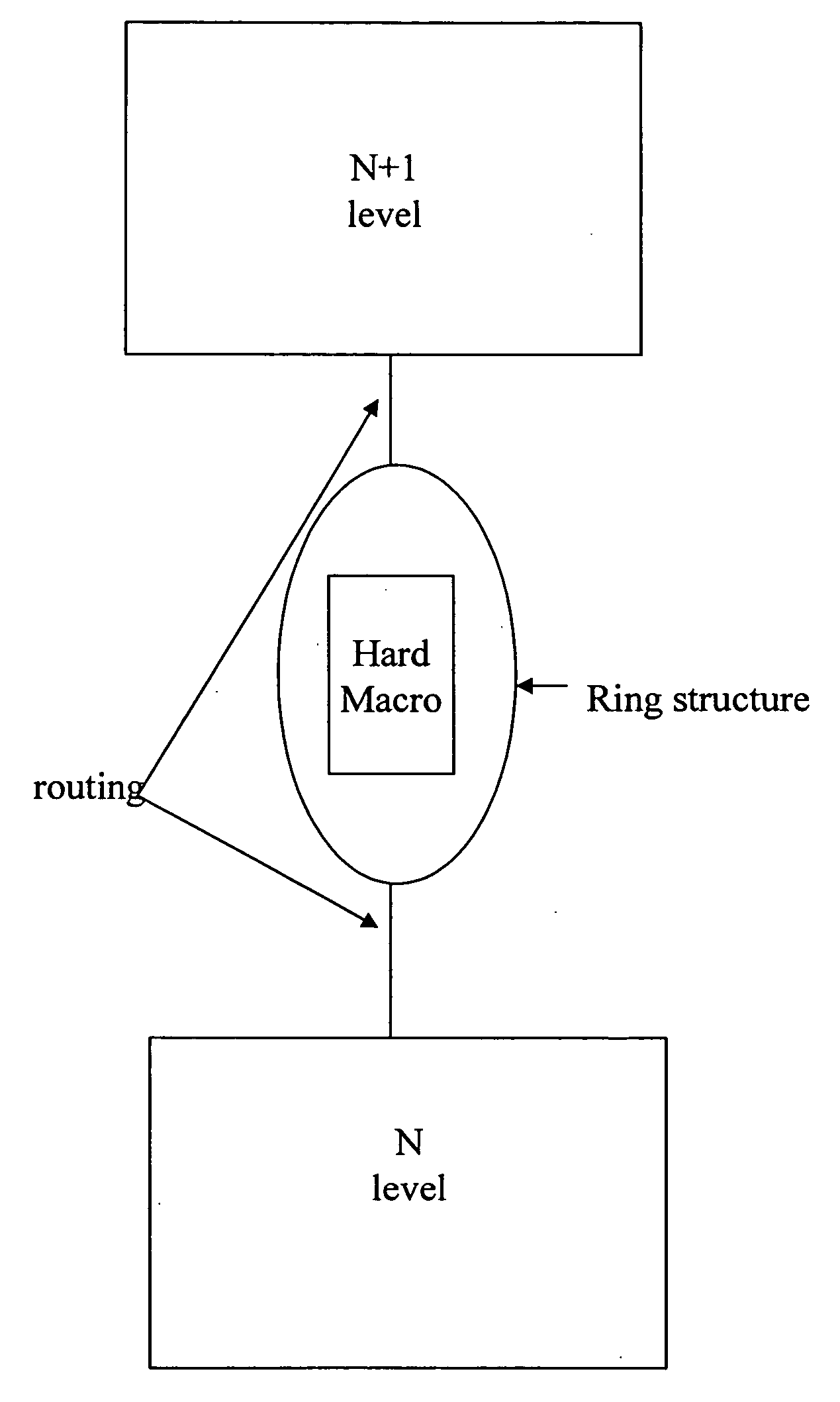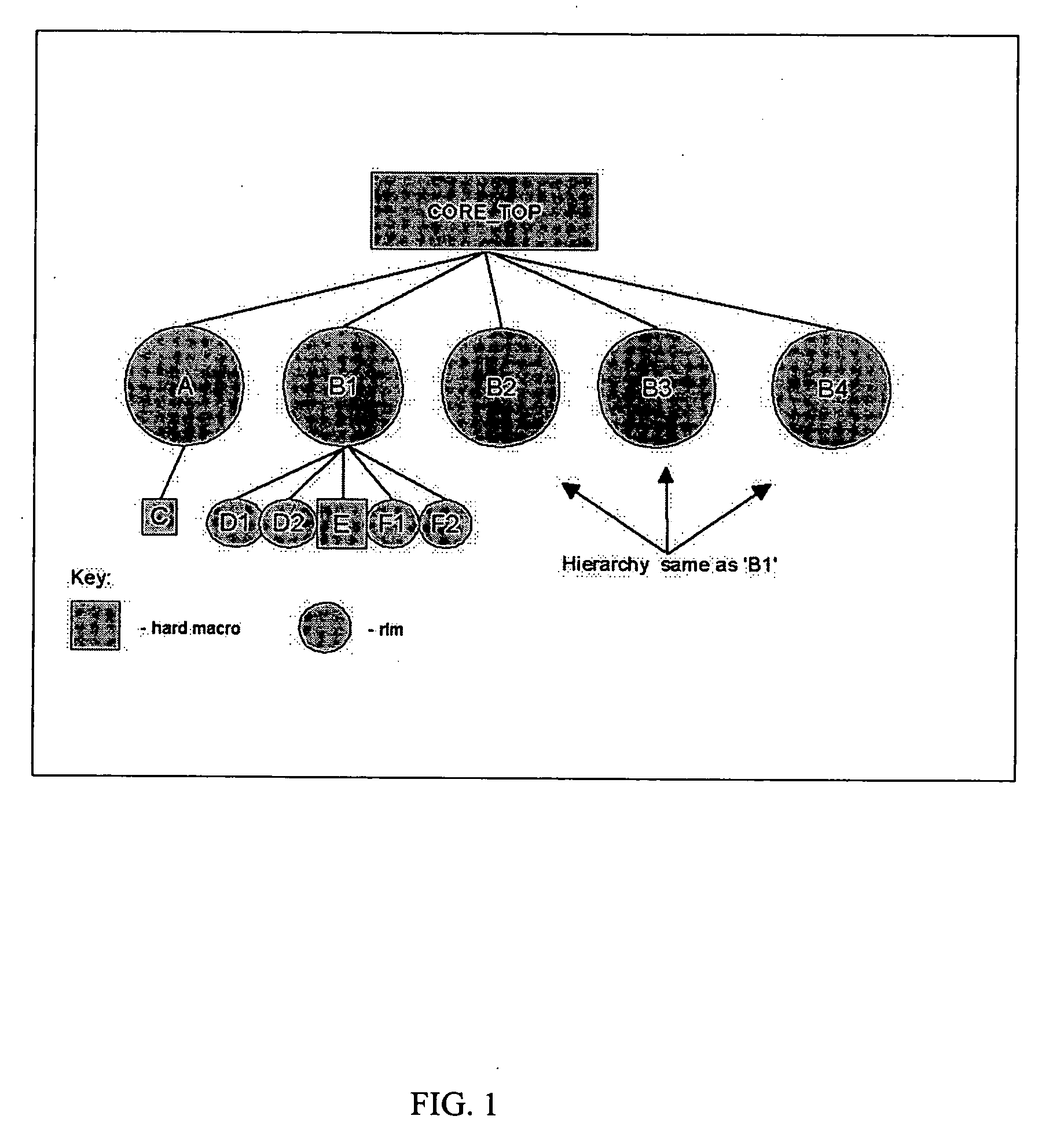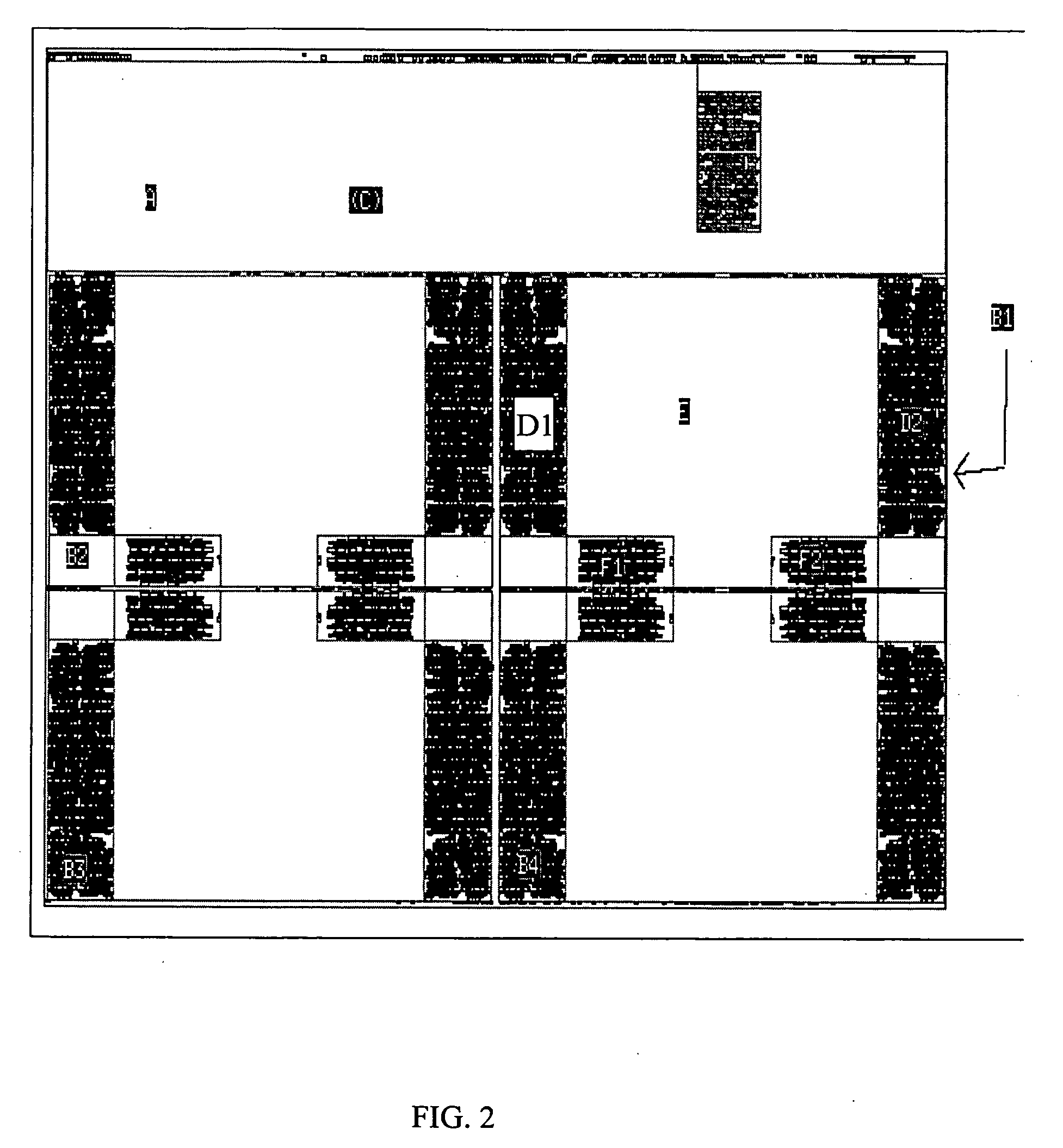System and method to power route hierarchical designs that employ macro reuse
a hierarchical design and power routing technology, applied in the field of circuit fabrication, can solve the problems of blockage of channels five and six, inability to wire signals, and increased cost of rlm re-use in additional area
- Summary
- Abstract
- Description
- Claims
- Application Information
AI Technical Summary
Benefits of technology
Problems solved by technology
Method used
Image
Examples
Embodiment Construction
[0025] The invention relates to method of fabricating a circuit, and more particularly to a system and method to power route hierarchical designs that employ macro reuse. By using the method of the invention, routing of random logic macros (RLM) that are used multiple times in a hierarchical VLSI (very large scale integration) design can be achieved without having to route each individual instantiation independently. In embodiments of the invention, once an RLM has been routed and timed it can be copied and reused in a physical design, as is, and does not require any wiring changes. The method of the invention conserves valuable area, improves wireability, and reduces the time required for routing and timing each RLM instance. In this manner, the invention provides improved constraint resolution. Furthermore, by implementing the invention, each RLM possesses the same timing and power characteristics, which improves overall circuit performance.
[0026] As discussed in further detail b...
PUM
 Login to View More
Login to View More Abstract
Description
Claims
Application Information
 Login to View More
Login to View More - R&D
- Intellectual Property
- Life Sciences
- Materials
- Tech Scout
- Unparalleled Data Quality
- Higher Quality Content
- 60% Fewer Hallucinations
Browse by: Latest US Patents, China's latest patents, Technical Efficacy Thesaurus, Application Domain, Technology Topic, Popular Technical Reports.
© 2025 PatSnap. All rights reserved.Legal|Privacy policy|Modern Slavery Act Transparency Statement|Sitemap|About US| Contact US: help@patsnap.com



